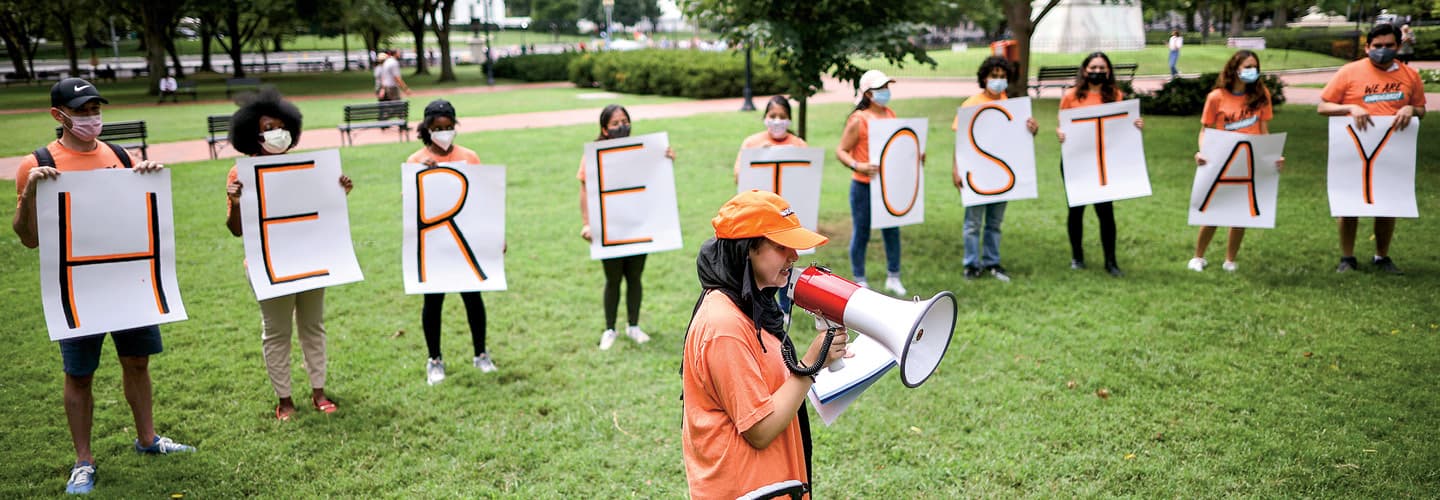Tommy Esquivel graduated in June from Hollywood High School in Southern California with awards honoring his determination, his record of service, and the highest average grade in his Advanced Placement environmental science class.
“I am excited to see what you will do with your future,” his science teacher, Alycia Escobedo, wrote in a farewell note. “Do big things.”
But Esquivel, 19, who grew up in Los Angeles without legal immigration status, faces serious obstacles. He has limited access to financial aid for college. In many states, he can’t get a driver’s license. Without a Social Security number, he can’t legally work. And though he has lived in the United States since the age of 9, he could at any time face deportation to Guatemala.
A majority of the undocumented immigrants graduating from high schools across the U.S. now have none of the protections offered over the past 10 years under a program that shielded most of the so-called Dreamers from deportation and made it legal for them to work and apply for college financial aid.
The Deferred Action for Childhood Arrivals program, commonly known as DACA, was intended as a stopgap measure to protect some of the nation’s most vulnerable immigrants—young people who were brought illegally to the U.S. as children, usually by their parents, and have grown up essentially as Americans—until Congress could agree on a comprehensive immigration overhaul or pass a bill to offer them a path to citizenship.
Since DACA took effect in 2012, some 800,000 young people have registered. But a long-term political solution never materialized. There’s been some bipartisan support for the push to provide a legal path to citizenship for DACA recipients—young people who made no decision of their own to break the law. Although they’ve been viewed as a special case by some lawmakers in both parties, coming up with a fix has remained controversial.
In the meantime, DACA, which President Barack Obama created by executive order, has stopped accepting new applications. It’s been mired in legal battles since President Donald Trump sought to end the program in 2017.
Tommy Esquivel graduated in June from Hollywood High School in Southern California. At graduation, he received awards for his dedication and service record. He also had the highest average grade in his Advanced Placement environmental science class.
“I am excited to see what you will do with your future,” his science teacher, Alycia Escobedo, wrote in a goodbye note. “Do big things.”
But Esquivel, 19, faces serious obstacles. He grew up in Los Angeles without legal immigration status. As a result, he has limited access to financial aid for college. In many states, he can’t get a driver’s license. Without a Social Security number, he can’t legally work. And though he has lived in the United States since the age of 9, he could face deportation to Guatemala at any time.
Across the U.S., there are many undocumented immigrants graduating from high school. Over the past 10 years, a program has shielded most of them from deportation. It also has made it legal for them to work and apply for college financial aid. Now, a majority of the so-called Dreamers have none of these protections.
The Deferred Action for Childhood Arrivals program is commonly known as DACA. It has protected some of the nation’s most vulnerable immigrants: young people who were brought illegally to the U.S. as children, usually by their parents. They have grown up as Americans in many ways. The program was meant to be in place until Congress could agree on immigration reforms or pass a bill to offer them a path to citizenship.
DACA took effect in 2012. Since then, some 800,000 young people have registered. But a long-term political solution never came to pass. There’s been some bipartisan support for the push to provide a legal path to citizenship for DACA recipients. That support hinges on the idea that these young people made no decision of their own to break the law. That’s why they’ve been viewed as a special case by some lawmakers in both parties. Still, coming up with a fix has remained out of reach.
President Barack Obama created DACA by executive order. But President Donald Trump tried to end the program in 2017. Since then, DACA has been tangled up in legal battles. In the meantime, it’s stopped accepting new applications.

